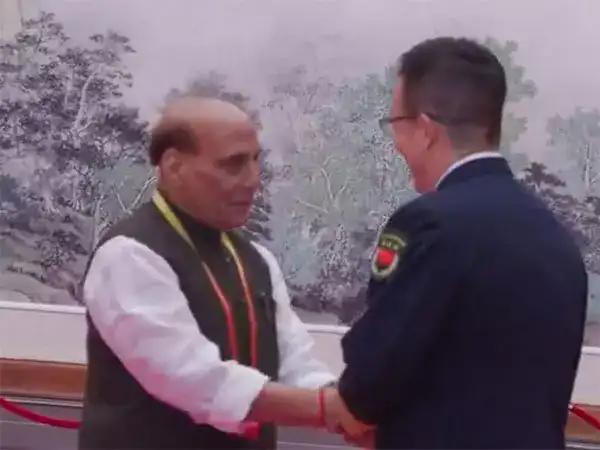
1. Historic Diplomatic Breakthrough
On June 26–27, 2025, India’s Defence Minister Rajnath Singh met Chinese counterpart Admiral Dong Jun on the sidelines of the SCO Defence Ministers’ Meeting in Qingdao, China. It marked Rajnath Singh’s first official visit to China since the 2020 Galwan Valley clash a milestone in thawing relations between the two nuclear powers
2. Resolving the 2020 Border Standoff: Seeking Permanent Solutions
At the forefront of discussions was the need to bridge the trust deficit from the 2020 standoff. Rajnath Singh emphasized progress toward a permanent, structured roadmap to manage the undemarcated 3,800 km Line of Actual Control (LAC) via robust border management, disengagement, and future delimitation
3. “Avoid New Complexities” in Bilateral Relationship
Both Rajnath singh and Dong Jun advocated avoiding fresh complications in India‑China relations. Singh reinforced the importance of maintaining positive diplomatic momentum, a standout theme echoed in their discussion
4. Reviving the Kailash Mansarovar Yatra
In a symbolically significant gesture, the resumption of the Kailash Mansarovar Yatra suspended since 2020 was reaffirmed during the meeting. Rajnath Singh expressed his satisfaction at the pilgrimage’s revival and even gifted Dong a traditional Madhubani painting, reinforcing a spirit of goodwill and cultural exchange
5. No SCO Joint Statement Due to Terrorism Dispute
Despite high‑level talks, the SCO meeting concluded without a joint defence communiqué. India refused to endorse the statement citing missing references to the April 22 Pahalgam terror attack, which claimed 26 lives, and a general lack of counter‑terrorism language
6. Strong Stance Against Terrorism
Singh used the summit platform to send a firm signal, asserting that “epicentres of terror are no longer safe”. He attributed recent violence to LeT and its affiliates and demanded accountability for cross‑border terrorism, implicitly targeting Pakistan
7. Focus on Operational Mechanisms & Roadmap
A key takeaway was the commitment to revive existing negotiation mechanisms between military and diplomatic channels. Both nations agreed to ongoing consultations on de‑escalation, border management, and eventual formal delimitation
8. Broader Regional Security Agenda
Beyond border issues, the meeting acknowledged wider security dynamics—including regional terrorism threats, drone warfare, and unconventional challenges. Singh underscored the need for proactive security measures in collaboration with SCO partners
9. Strategic Context and Market Perception
This diplomatic engagement aligns with India’s ongoing strategy to stabilize ties with China following the Ladakh de‑escalation efforts of October 2024 and January 2025’s direct flight resumption Although cautious, analysts recognize it as a positive confidence‑building step that could pave the way for future agreements.
10. Looking Ahead: What Comes Next?
| Area | Proposed Action |
|---|---|
| Trust‑building | Concrete on‑ground disengagement at friction points |
| Delimitation | Begin structured border talks through SR/WMCC mechanisms |
| Counter‑terrorism | Include terrorism wording in joint communiqués |
| Cultural Diplomacy | Resume people‑to‑people exchanges like yatra |
| SCO Coordination | Align operational security frameworks across member states |
Geopolitical Significance
The meeting between Rajnath Singh and Dong Jun holds major geopolitical significance not just for India-China ties, but for the broader Indo-Pacific region. With rising tensions in the South China Sea and global power shifts, India’s emphasis on territorial integrity and sovereignty sends a strong message. The SCO platform provided a critical diplomatic stage to express concerns without escalation. Going forward, both countries must ensure consistent military dialogue, respect for established protocols, and a shared commitment to regional peace. If successful, these diplomatic efforts may restore the long-term balance in Asia’s most sensitive border zones.
Final Analysis
Rajnath Singh meeting with Dong Jun in Qingdao represents a calibrated step forward—blending firmness on territorial integrity and counter‑terrorism with measured diplomacy on border stabilization and cultural outreach. The absence of a joint communiqué, while notable, underscores India’s insistence on placing security and transparency at the heart of engagement.
click here to read such more post like this in our page
